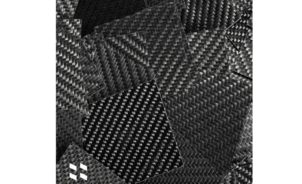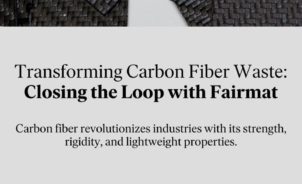In this article, we’ve discussed how manufacturers can lower their pickleball paddle’s environmental impact to get a step closer to their sustainability goals.
We’re no longer limited to conversations about biodegradable packaging or simply planting more trees. Companies aspiring to achieve ambitious sustainability objectives must adopt a circular mindset.
Ecodesign and circular design concepts, which have been around for a while now, have now become a business imperative.
Designing for circularity is an indispensable strategy for R&D Engineers and Product Developers/Managers to incorporate into their product development approach.
The European Commission’s Eco-design regulation has significantly reduced the energy consumption of various consumer goods. Furthermore, it encourages industrial products to embrace energy-efficient measures under its directive.
Ecodesign on an industrial scale often means a change in the business model. Nevertheless, it remains a growing trend, and the eco-conscious consumer is driving it.
Moving on to the sports sector and the upcoming sport, pickleball. Consumer demand has not veered off course. It still favors high-performing equipment that is also environmentally sound.
The 2023 APP Pickleball Participation Report showed that over 48.3 million players have played pickleball, America’s fastest-growing sport, at least once in 12 months. It’s a significant number, considering pickleball gained popularity only recently (post-pandemic).
The question is also about how sports brands can ensure that this growing sport is environmentally sustainable from its onset.
Advanced Materials: Sweet spot between High-performance and Sustainability (?)
Today, almost all high-performance pickleball paddles available on the market are made of carbon-intensive materials: fiberglass or carbon fiber.
Generally, carbon composites are believed to have a higher Global warming potential (GWP) than many other materials due to intensive manufacturing processes and energy requirements.
The GWP of 1 kg of fiberglass Composite is 9.8 kg CO2 (raw material, transport, and manufacturing life-cycle stages). According to another study, carbon composites indicated a GWP of 54 kg CO2Eq (for all production stages).
The sporting industry has only recently started using advanced composite materials in sports equipment. Today, manufacturers make rackets, golf clubs, ski boards, bike frames, and many other sporting goods from carbon fiber.
It is essential to consider not just the production but also the end-of-life treatment of these advanced materials. Their collective footprints are major contributors to climate change.
We must consider how to keep advanced materials out of landfills once disposed of so that upcoming sports can be played beyond our lifetimes.
Today, there’s a widespread misconception: carbon fiber, in this context, is believed to be non-recyclable. And the already-recycled or reclaimed carbon fiber is deemed low-grade for repurposing.
Conversely, research indicates that carbon composites may have a lower environmental impact than fiberglass, particularly when considering the promising route of recycling.
Then what’s the middle ground? How can brands become sustainable without giving up using quality materials in making sports equipment?
Fairmat has developed a proprietary process that recycles and repurposes post-industrial carbon fiber composite and post-consumer parts. The resulting second-generation material (Fairmat Chips) is then used to manufacture a high-performing, low-carbon “Impact Surface.”
Eco-friendly Upgrade: Adding Carbon Fiber ‘Impact Surface‘ to Pickleball Paddles
Fairmat Impact Surface can replace nearly all unsustainable traditional surface materials used in pickleball paddles today.
The surface (face or exterior), affixed to both sides of the paddle core, provides the paddles with control, precision, and spin to some extent. Its quality must remain uncompromised.
Presently, manufacturers incorporate fiberglass, carbon fiber, and graphite surface materials in their pickleball paddle designs. But carbon fiber stands out as a top-of-the-line paddle material for striking the right balance between effortless maneuverability and aggression-friendly durability.
Carbon fiber pickleball paddle surfaces consist of tightly woven carbon fibers, delivering a combination of lightweight construction and high-level performance.
Fairmat, employing a technology-driven and data-centric approach, was able to manufacture a carbon fiber material from recycled composite waste.
This second-generation material, or as we call it, Impact Surface, successfully retains its aerospace-grade quality while achieving a significantly reduced carbon footprint compared to its virgin counterpart.
Why should brands replace their current paddle surface material with a second-generation Carbon Fiber Impact Surface?
- Impact Surface properties are 70% identical to the carbon fiber source material. Our carbon fiber waste inventory’s quality, results from our partnerships with mobility and aerospace industry leaders. For one thing, aerospace-grade material yields outstanding pickleball paddle rackets.
- The price difference between the Impact Surface and virgin carbon fiber remains unchanged. And so does the performance of the pickleball paddle, to a great extent.
- Manufacturers can lower their paddles’ carbon footprint by sourcing recycled material. Carbon fiber is not biodegradable. Therefore, manufacturers can incorporate recycled material in their pickleball equipment to limit the possible waste and avoid the production of more virgin carbon fiber.
- With a Circular mindset, manufacturers can introduce their customers to a sustainable product. And also encourage them to join the loop by helping them put back their used paddles into the circular ecosystem for further recycling.
Impact Surface is a sustainable game-changer that ensures a winning play, both on the court and for the planet.
Choosing eco-friendly materials has never been this rewarding. Invest in a Carbon Fiber Impact Surface for your pickleball paddles and join the league of future-forward manufacturers!
Here are other eco-friendly pickleball gear we came across that players can pair with their (future) low-carbon pickleball paddles: Shoes, Apparel, and Pickleball balls.




